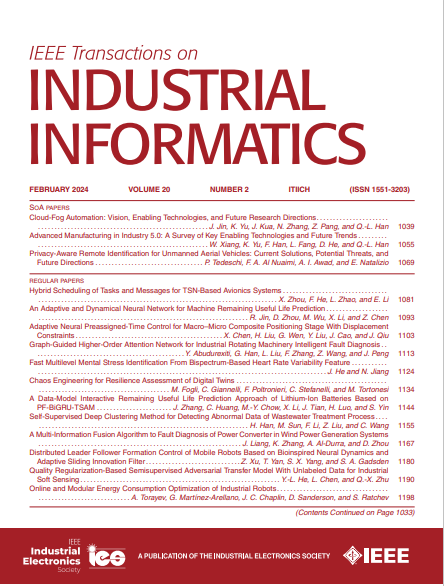基于残差学习的深度可分离卷积和分段推理的高效能量分解
IF 9.9
1区 计算机科学
Q1 AUTOMATION & CONTROL SYSTEMS
引用次数: 0
摘要
能源分解是非侵入式负荷监测中的一项关键任务,涉及将单个设备的贡献从总能耗中分离出来。目前,深度神经网络被广泛用于解决这一问题,并取得了良好的效果。不幸的是,这种解决方案需要大量的计算和存储资源。因此,低要求和高性能的能量分解模型和方案是值得期待的。在本文中,我们提出了一种新的轻量级能量分解模型,该模型结合了残差学习和深度可分离卷积,同时实现了与最先进模型相当的性能。在此基础上,提出了一种高效的分段预测方案,以降低模型应用中的执行频率,满足非侵入式负荷监测的实时性要求。在公开数据集上的实验结果表明,与最先进的模型相比,所提出的方法减少了99.17%的计算量,而所有电器的平均绝对误差仅增加了0.727 W。本文章由计算机程序翻译,如有差异,请以英文原文为准。
Efficient Energy Disaggregation via Residual Learning-Based Depthwise Separable Convolutions and Segmented Inference
Energy disaggregation is a pivotal task in non-intrusive load monitoring, involving the separation of individual appliance contributions from aggregated energy consumption. At present, deep neural networks are extensively employed for the resolution of this problem, eliciting salutary effects. Unfortunately, this resolution demands a wealth of computational and storage resources. Therefore, energy disaggregation models and schemes characterized by low demands and high performance are anticipated. In this article, we propose a novel lightweight energy disaggregation model by incorporating residual learning and deep separable convolutions while achieving comparable performance to state-of-the-art models. Furthermore, an efficient segmented prediction scheme is proposed to reduce the execution frequency in model applications and meet the real-time requirements of nonintrusive load monitoring. The experimental results on publicly available datasets demonstrate that the proposed method reduces computation by 99.17% compared to state-of-the-art models, while the average of mean absolute error for all appliances increases by only 0.727 W.
求助全文
通过发布文献求助,成功后即可免费获取论文全文。
去求助
来源期刊

IEEE Transactions on Industrial Informatics
工程技术-工程:工业
CiteScore
24.10
自引率
8.90%
发文量
1202
审稿时长
5.1 months
期刊介绍:
The IEEE Transactions on Industrial Informatics is a multidisciplinary journal dedicated to publishing technical papers that connect theory with practical applications of informatics in industrial settings. It focuses on the utilization of information in intelligent, distributed, and agile industrial automation and control systems. The scope includes topics such as knowledge-based and AI-enhanced automation, intelligent computer control systems, flexible and collaborative manufacturing, industrial informatics in software-defined vehicles and robotics, computer vision, industrial cyber-physical and industrial IoT systems, real-time and networked embedded systems, security in industrial processes, industrial communications, systems interoperability, and human-machine interaction.
 求助内容:
求助内容: 应助结果提醒方式:
应助结果提醒方式:


